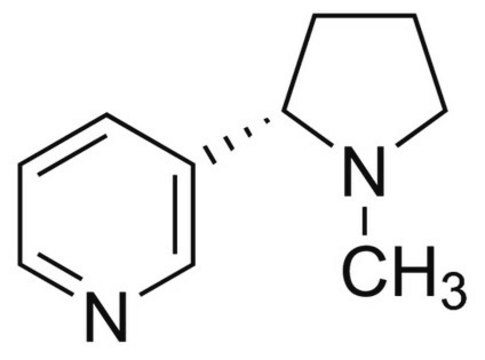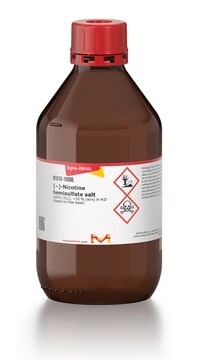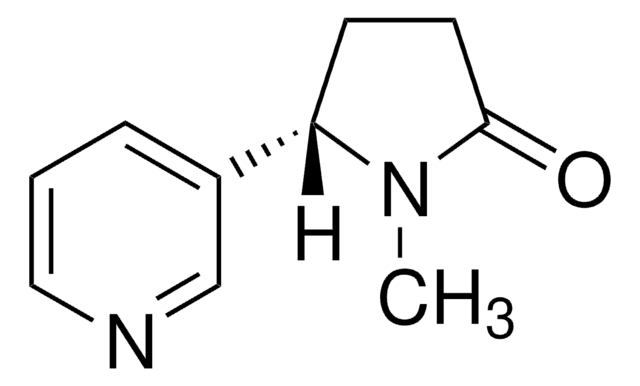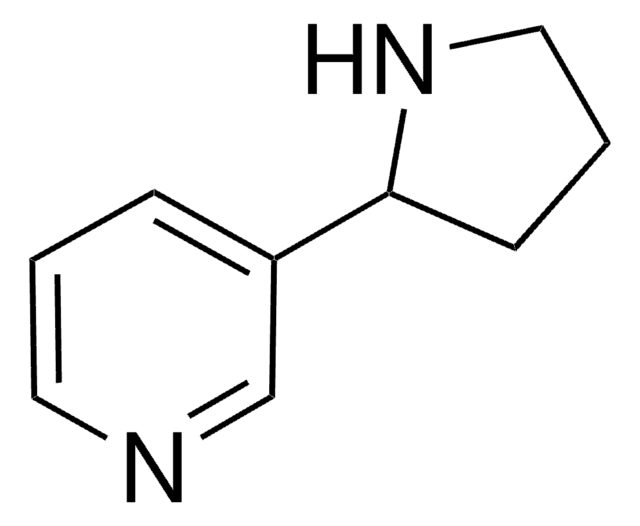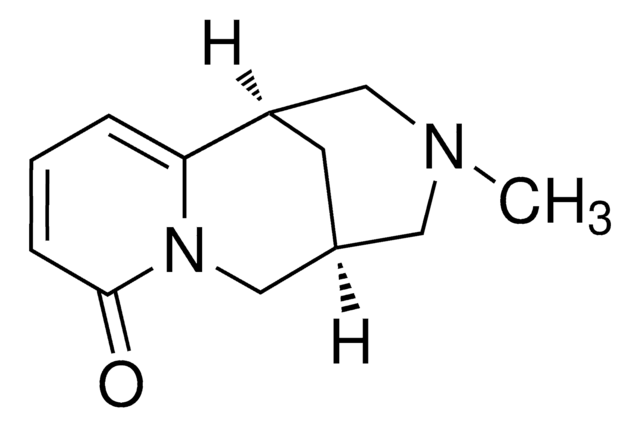Kluczowe dokumenty
About This Item
Polecane produkty
Poziom jakości
Próba
≥99% (TLC)
Formularz
liquid
aktywność optyczna
[α]25/D 0°(lit.)
kolor
yellow
rozpuszczalność
ethanol: 50 mg/mL
gęstość
1.02 g/mL at 25 °C (lit.)
ciąg SMILES
CN1CCCC1c2cccnc2
InChI
1S/C10H14N2/c1-12-7-3-5-10(12)9-4-2-6-11-8-9/h2,4,6,8,10H,3,5,7H2,1H3
Klucz InChI
SNICXCGAKADSCV-UHFFFAOYSA-N
informacje o genach
human ... CHRNA2(1135) , CHRNA3(1136) , CHRNA4(1137)
rat ... Chrna3(25101) , Chrna4(25590) , Chrna7(25302)
Szukasz podobnych produktów? Odwiedź Przewodnik dotyczący porównywania produktów
Zastosowanie
- as a supplement of high-glucose Dulbecco′s modified Eagle′s medium, to test its effect on mesenchymal stem cells
- as a standard for the determination of nicotine concentration using phase high-pressure liquid chromatography
- as a test compound to study its effects on fibril formation
Działania biochem./fizjol.
Opakowanie
Hasło ostrzegawcze
Danger
Zwroty wskazujące rodzaj zagrożenia
Zwroty wskazujące środki ostrożności
Klasyfikacja zagrożeń
Acute Tox. 2 Dermal - Acute Tox. 2 Inhalation - Acute Tox. 2 Oral - Aquatic Chronic 2 - Eye Dam. 1 - Skin Irrit. 2
Kod klasy składowania
6.1A - Combustible acute toxic Cat. 1 and 2 / very toxic hazardous materials
Klasa zagrożenia wodnego (WGK)
WGK 3
Temperatura zapłonu (°F)
213.8 °F - closed cup
Temperatura zapłonu (°C)
101 °C - closed cup
Środki ochrony indywidualnej
Eyeshields, Faceshields, Gloves, type ABEK (EN14387) respirator filter
Wybierz jedną z najnowszych wersji:
Masz już ten produkt?
Dokumenty związane z niedawno zakupionymi produktami zostały zamieszczone w Bibliotece dokumentów.
Klienci oglądali również te produkty
Nasz zespół naukowców ma doświadczenie we wszystkich obszarach badań, w tym w naukach przyrodniczych, materiałoznawstwie, syntezie chemicznej, chromatografii, analityce i wielu innych dziedzinach.
Skontaktuj się z zespołem ds. pomocy technicznej
